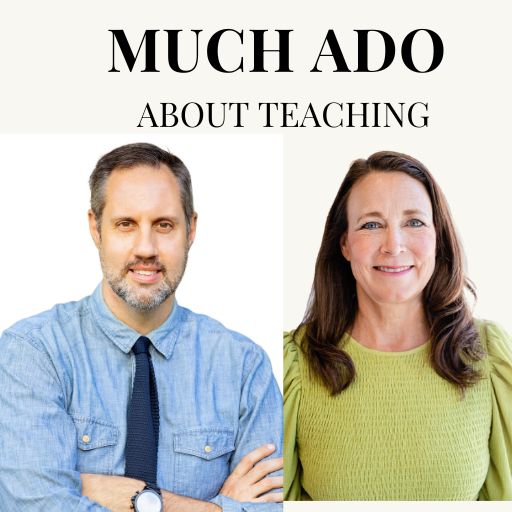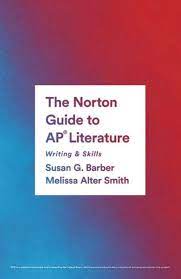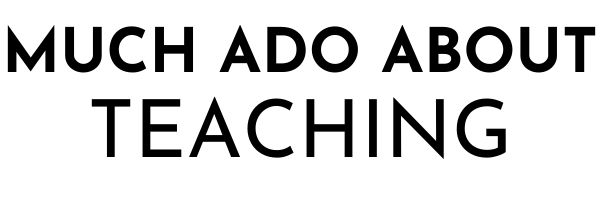For the 2022 reading, College Board asked me to read for AP Seminar, and I happily accepted because I didn’t want to miss out on the ~*experience*~ of an AP reading. While it certainly broadened my horizons on the work that goes into AP Seminar, I was much more excited when I got my invitation to read for Lit this year, as that’s my wheelhouse, and I’ve read the two prior years, although both online where the camaraderie wasn’t there with my being at home, and, let’s be frank, 2020 was a weird year.
For this year’s reading I was assigned the Q2 from Set 1 taken from the 2016 novel Everfair by Nisi Shawl. This was the prompt for most of the digital students. The gist of the passage is a 16-year-old girl’s adventure with her bicycle and the prompt asks students to write about the character’s complex relationship with her bicycle. The passage and prompt were accessible to students, and the literary devices and techniques were easy to find and analyze.
Based on my almost 7 days of reading the essays for this prompt, I’ve highlighted a few key teaching points that I will bring into next year and some changes in my practice. This is why we all sit 8 hours in a freezing cold convention center for 7 days reading essays, right? RIGHT?!??!!
Take Away 1: Essays with Thesis Statements Organized by Complexity NOT literary elements or techniques scored better overall.
The thesis point is not hard to get: don’t repeat the prompt and make some kind of claim– that’s it! However, the multi-pronged thesis statement is very difficult for students to let go of, so it appears many teachers work with that style of thesis statement because students are more comfortable with it. AP lit teachers, get your students uncomfortable! Teach them to look for contrasts and base their argument off of that instead of literary elements and techniques. When students focus their analysis on complexity and then support that with literary elements and techniques, the analysis becomes stronger because their not simply relying on an I-spy mentality of analysis: students see a simile, they know what that is, so they try and analyze it in and of itself as opposed to connecting it to the big idea of complexity within the work. Furthermore, it weakens the line of reasoning because, well, most students didn’t have one when focused on literary elements and techniques as their argument. Line of reasoning is about building the argument, and that’s not easy to do when you’re only focusing on HOW the author wrote, not WHAT the author wrote about and WHY. If students come up with complexity first then write an outline connecting the complexity to the literary element or technique the highlight evidence to use per literary element or technique then write commentary connecting those to their thesis, they’re going to write a better essay. Literary elements and techniques support argument, they cannot simply BE the argument.
Tip: Pairing complexity with literary elements and techniques leads to a better line of reasoning and richer analysis.
Take Away 2: Students can identify MANY lit elements and techniques, but Analyzing Author’s Purpose was a little trickier
Many students were able to identify myriad literary elements and techniques, which shows they know the vocab. However, sometimes students didn’t understand the author’s purpose of the element or technique so tried to work themselves into some analysis based on complexity, but it wasn’t regularly done or done well. For example, many students picked up on alliteration, which is scattered throughout the passage. Yet many of them forgot that alliteration is a sound device, and in their analysis, discussed how it was used to show Lisette was having fun with no connection to the sounds that show this. While you and I know that that’s not the purpose of a sound device, students often did not. One student, in the nearly 1000 essays that I read, analyzed alliteration in terms of what the author’s purpose in the use of sound, and it was fantastic. The others fell flat. Another lit element I saw come up frequently was imagery. There is A LOT of imagery in this passage, but students need to be taught the purpose of imagery BEYOND “it paints a picture” (which honestly became nails on a chalkboard to me) OR the author using imagery so the reader can visualize _________________ (fill in blank: the main character, the setting, the relief, etc., etc.). The best use of imagery is for what it’s intended: connecting to the five senses but for a purpose. Remind students the author does the creating and writing; characters are doing the actions the writer chooses for plot. The reader does nothing.
Tip: While imagery is, of course, a worthy literary element to analyze, make sure students know to write about its connection to complexity and author’s purpose.
Take Away 3: Stop Mentioning “the reader”
While reader response criticism is a viable type of literary criticism, keep it out of academic writing like this as it’s a crutch. I noticed several things in this regard: students know not to use personal pronouns, for the most part, but the reader just substitutes for “I” or “me” in most analyses. Analysis is always richer and more well done when students focus on the AUTHOR and what they’re doing and why. In this way, students will focus more on analyzing the author’s purpose and what and how they created this piece of writing versus what students did when reading it.
Tip: Teach students to focus on the author and what they’re doing. Have them proofread their own essays and remove the reader to show them how much better it reads without it.
Take Away 4: Evidence and Quotations
Students have the passage accessible to them, so they should use the passage to find direct quotations that support their argument for complexity. Many students paraphrased, and while that’s okay, essays read much better when students used direct quotations. Further, embedding quotations instead of using the full quote made the writing read better, which could lead to the sophistication point. Also make sure students know to write themselves into a quotation; it is jarring to go from commentary to a quote with no introduction. I found that giving context when using an entire direct quotation led to better organization and ease of reading. Finally, teach students to go away from “In the text, it states…” for an introduction of a quote. I know I often write it on students’ work and continue to see it after that, so next year, I’m going to put it on my Please Don’t Do This list for students. It’s redundant and immediately off-putting for *the reader*.  And one more last thing: teach students not to end a sentence with a quotation– they always need analyzing!
And one more last thing: teach students not to end a sentence with a quotation– they always need analyzing!
Tip: Embedding quotation is the way to go.
Take Away 5: The Best and Worst of Literary Elements and Techniques
While I’ve already talked about analyzing based on author’s purpose, I thought I’d share which lit elements and techniques were analyzed well and lead to richer analysis and which ones… didn’t.
Syntax: Analyzing this device showed students not only understood what syntax was, but students were able to analyze the author’s writing which showed more high quality analysis and focused more on the author’s craft. Many students recognized that the author used syntax to create some kind of tone; this shows high reading comprehension analysis skills. However, if mentioning tone, do state what it is, as that helps with analysis of complexity.
Diction: Some analysis was done well, some was not. Diction needs an adjective to help make meaning; otherwise the student frequently relies on the author “using diction”, which is words. The author better dang well be using diction! One of the funniest lines I read was about how the author used diction only in the final paragraph. What was the author using before that will always remain a mystery.
Imagery: When used well, students analyzed the author’s purpose in regards to the main character or the setting. When used not well… I’ve already discussed.
Point of View: Many students made attempts to analyze point of view, and while some recognized the author’s use of third person limited, the ones who thought it was omniscient had weaker analysis. While being wrong or not stating the literary element or technique won’t lead to a “failing” score, let’s be real, when it’s correct and correctly analyzed, the essay is just better.
Tip 5: While literary elements and techniques can seem overwhelming to find and analyze, there are many options- teach students to make the evidence work for them!
Take Away 6: Thesis + Theme = Sophistication (almost always)
The essays I read where students took the time to connect their thesis statement to a universal message and consistently analyzed its connection to their topic per paragraph were always higher scoring essays. Many of them were awarded the sophistication point because they were able to set their essay in a “broader context”. If you’re like me, I tell my students the sophistication point is VERY difficult to get (which it is!) and to concentrate on getting a 1-4-0. But I think that the thesis + theme model could get them to sophistication almost every time. But be warned: students can also become tangential, which leads to problems with line of reasoning and problems with analyzing what the prompt asked for.
Tip: Theme should be included with the thesis AND consistently analyzed
Take Away 7: These Don’t Fit in a Group- Final Tips
-If your student has particularly bad handwriting, work with them on penmanship. This seems pedantic, when students’ handwriting is incredibly difficult to read, we readers are just guessing at the students’ analysis. While I think that bad handwriting should be addressed long before the upper classes of high school, sometimes it has to be.
-Vocabulary plays a vital role in how much students can comprehend. Many students thought that “intoxicating” had a negative connotation in this passage, but it doesn’t, which, of course, causes their essay to be off track. The more words the students are introduced to, the better.
-A fun beginning of the year activity could be to cut up an essay and have students put it back together, focusing on line of reasoning AND to show students how to be a literature detective
-I also think a literary elements and techniques Scattergories would be fun!
-Rhetorical devices have almost no place in literary a analysis.
-Avoid using size related adjectives; they don’t add anything to writing (ex: …play a huge role). Adjectives should elevate what the students understand and analyze.
-Force students to take time to proofread at the end. While grammar doesn’t technically “count” for scoring, when they’re egregious, students could go from a 4 to a 3 in evidence and commentary. It also sometimes causes readers to lose their train of thought (at least this reader!).
-Teach students to use the name of the literary device so the reader doesn’t have to go on a scavenger hunt or guess what the student was trying to analyze. While we can almost always guess what the student was trying to analyze in terms of elements and techniques, sometimes it was tricky and may be between a 2 or 3 on the evidence and commentary (a 2 is one literary device analyzed a 3 has more than one).
-In that same vein, tell students not to waste their time defining the term; every reader either teaches AP Literature or the college level equivalent.
Overall, there were very few ones and twos that I saw, which I think shows that we’re all doing well. Hopefully, these insights will help you this year and beyond. Good luck to everyone on the 2024 test!
Thanks to Cheryl Spevak for sharing her insights. Cheryl teaches at Fairfax High School in Fairfax, VA.












